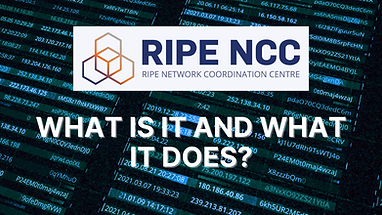SOX cybersecurity refers to the practices and standards required for compliance with the Sarbanes-Oxley Act (SOX) in the context of information security. The Sarbanes-Oxley Act of 2002 was enacted to protect investors and the public by ensuring the accuracy and reliability of corporate financial disclosures. While SOX primarily focuses on financial reporting, it also has significant implications for cybersecurity, as data integrity and secure access to financial information are crucial for compliance.
Overview of SOX Compliance
SOX was introduced in response to major corporate scandals like Enron and WorldCom, which involved fraudulent financial reporting that misled investors. SOX compliance mandates that publicly traded companies follow strict standards to ensure the transparency, accuracy, and security of financial data. SOX compliance is enforced by the U.S. Securities and Exchange Commission (SEC) and applies to U.S. public companies and some international companies with U.S. operations.
Cybersecurity plays an integral role in SOX compliance because protecting financial information from unauthorized access, tampering, and breaches is essential for accurate reporting. While SOX does not provide specific cybersecurity guidelines, companies must implement IT controls that support data integrity, access management, and audit trails, which are all elements of effective cybersecurity.
Key SOX Cybersecurity Requirements
SOX cybersecurity compliance focuses on a few key areas:
- Data Integrity and Accuracy: Companies must ensure that financial information is accurate and protected from tampering. This requires systems that maintain data integrity through validation, error-checking, and data protection measures. Cybersecurity protocols, such as encryption, secure storage, and redundancy, help prevent unauthorized modifications and safeguard data accuracy.
- Access Controls: Only authorized personnel should have access to sensitive financial data. SOX mandates robust access controls to restrict unauthorized users from viewing or modifying financial information. Companies implement various access control mechanisms, such as multi-factor authentication (MFA), role-based access control (RBAC), and identity verification to meet these requirements.
- Audit Trails: SOX requires detailed records of who accessed or altered financial data and when these actions occurred. This is crucial for tracking any unauthorized activity that could indicate data tampering or fraud. Cybersecurity measures like logging, monitoring, and maintaining an audit trail provide visibility into system activity and enable companies to detect unusual or unauthorized changes.
- Data Retention and Backup: Companies must retain financial records and related data for a specific period, as mandated by SOX. Cybersecurity practices like regular data backups, disaster recovery planning, and secure storage help ensure that data remains available and unaltered over time, which supports both SOX compliance and business continuity.
- Risk Assessment and Management: SOX requires regular assessment of internal controls to identify potential risks to financial data. Companies must evaluate cybersecurity threats and vulnerabilities that could impact their financial reporting systems. Regular risk assessments, vulnerability scans, and penetration testing allow companies to stay proactive about emerging threats.
Importance of SOX Cybersecurity
SOX cybersecurity is essential for companies because data breaches and unauthorized access can directly impact the integrity of financial reporting. For example, if a cyber attack compromises a company’s financial records, it could lead to inaccurate reports that mislead investors and stakeholders. Non-compliance with SOX can result in heavy penalties, fines, and reputational damage.
Furthermore, SOX cybersecurity ensures transparency in financial reporting, fostering trust with investors and regulators. Protecting financial data from threats like hacking, ransomware, and insider fraud helps organizations uphold their compliance and maintain a strong reputation in the market.
How to Achieve SOX Cybersecurity Compliance
To achieve SOX cybersecurity compliance, organizations should adopt the following practices:
- Implement Strong IT Controls: Implement access controls, encryption, logging, and monitoring to safeguard financial data.
- Regularly Audit and Test Controls: Conduct periodic audits and vulnerability assessments to ensure cybersecurity measures are working effectively.
- Ensure Employee Awareness and Training: Employees should be trained on cybersecurity protocols and SOX compliance requirements.
- Invest in Cybersecurity Solutions: Using tools for threat detection, data protection, and access management can strengthen compliance.
- Engage with External Auditors: External auditors can help assess the effectiveness of IT controls, identify gaps, and ensure compliance.
Conclusion
SOX cybersecurity is critical for protecting financial data and ensuring compliance with regulatory requirements. By implementing strong cybersecurity controls and regularly monitoring them, companies can maintain the accuracy and integrity of their financial information, fostering investor trust and reducing the risk of costly penalties.




Your positive and uplifting words are like a ray of sunshine on a cloudy day Thank you for spreading light and positivity in the world
I admire how this blog promotes kindness and compassion towards ourselves and others We could all use a little more of that in our lives